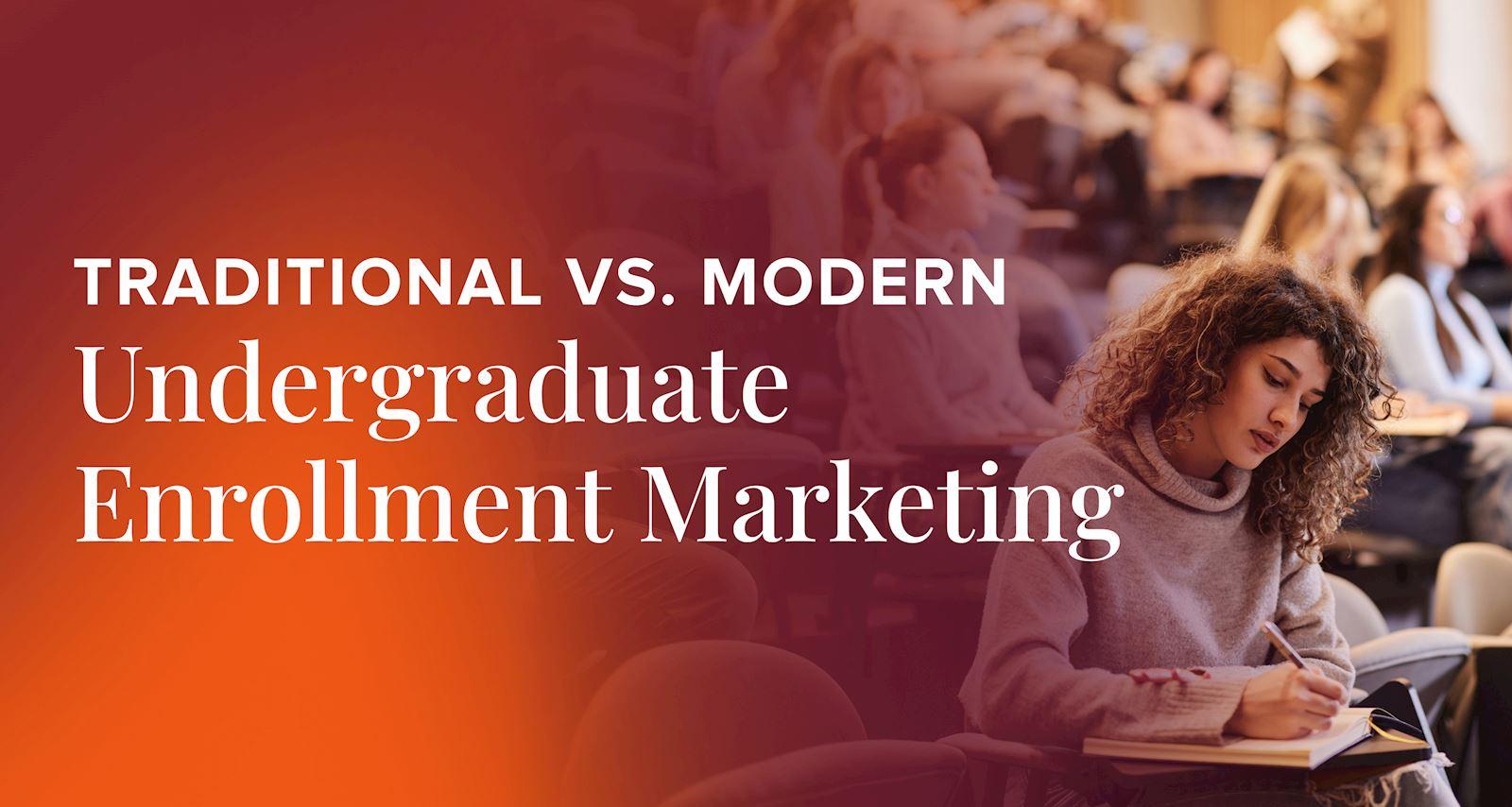Traditional vs. Modern Undergraduate Enrollment Marketing
Published by Spinutech on September 18, 2025

For private colleges, first-year recruitment gets more challenging with every cycle.
The old playbook — broad campaigns, generic messaging, and one-size-fits-all tactics — simply isn’t as effective with today’s prospective students and families.
The institutions seeing growth are the ones modernizing their approach: Leaning into data-driven strategies, adopting always-on marketing, and personalizing the student journey with the same sophistication that consumer and eCommerce brands have been perfecting for years.
5 Key Enrollment Challenges and 5 Strategies for Solving Them
Here’s a breakdown of five core challenges enrollment leaders face, how traditional strategies are falling short, and the modernized approaches driving results.
1. Shrinking Applicant Pools
The challenge: Every year, the pool of prospective first-year students seems to shrink. Private colleges aren’t just competing with each other, but with public universities, community colleges, and nontraditional pathways.
Where traditional strategy fails: Colleges have long relied on the same over-solicited junior and senior lists, pushing broad awareness campaigns with copy-and-paste messaging. The result? Diminishing returns and fewer qualified inquiries.
Where the modern approach wins: Enrollment leaders are expanding lead sources through lookalike modeling, behavioral targeting, and cross-platform remarketing. Borrowing tactics from competitive industries ensures schools get in front of the right-fit prospects — not just the usual names everyone else is chasing.
2. ROI Questions From Families
The challenge: With rising tuition and mounting student debt concerns, families are scrutinizing the return on investment of a college degree more than ever. They want clear evidence that the cost is worth it.
Where traditional strategy fails: “Small class sizes” and “personal attention” have been the go-to talking points for decades. Without proof, though, they sound like empty claims. Meanwhile, career outcomes and alumni success often get buried deep in brochures or websites.
Where the modern approach wins: Modern strategies put ROI front and center. Transparent job placement rates, internship pipelines, scholarship impact, and alumni stories are highlighted at every touchpoint. Families can see the value clearly — and they expect nothing less.
3. Competing With Alternative Pathways
The challenge: Today’s students have more options than ever — from community colleges and online universities to apprenticeships and direct-to-career training programs. Each alternative promises affordability and speed.
Where traditional strategy fails: Too often, colleges address competitor options only when prospects raise them. By then, it’s too late — the conversation is already framed around “cheaper” or “faster” alternatives.
Where the modern approach wins: Institutions that proactively position against alternatives come out ahead. Through content, program-specific messaging, and proof of unique value, they own the comparison before it starts.
4. The Digital-First Journey
The challenge: Prospective students live in a digital-first world. Their college search often starts — and continues — online, with expectations shaped by the speed and sophistication of modern consumer experiences.
Where traditional strategy fails: A static, brochure-style website and one-off paid campaigns aren’t built for the way students research today. When digital experiences lag, so does engagement.
Where the modern approach wins: Schools investing in always-on, cross-channel strategies are creating seamless experiences across paid, organic, and owned media. By treating the recruitment funnel like a modern eCommerce journey — tracking micro-conversions, optimizing touchpoints, and keeping content fresh — they stay top of mind from first click to deposit.
5. Rising Demand for Hyper-Personalization
The challenge: Students expect experiences tailored to who they are — their background, goals, and interests. Generic outreach risks being ignored in a world where personalization is the norm across every digital interaction.
Where traditional strategy fails: Basic segmentation (e.g., name, academic interest, etc.) isn’t enough. Today’s students expect personalized experiences at every step. A one-size-fits-all message risks feeling irrelevant — or worse, ignored.
Where the modern approach wins: Advanced segmentation and dynamic creative allow schools to tailor experiences for international students, first-gen applicants, transfer prospects, and more. Done right, every student feels seen and understood — which builds trust and boosts yield.
Out With the Old Playbook, In With the New Playbook
The question isn’t whether traditional strategies are failing. It’s whether you’re ready to modernize before your competition does.
Private colleges can’t afford to rely on “good enough” recruitment strategies. The modern enrollment landscape demands data-driven targeting, authentic ROI messaging, and a truly personalized digital journey.
We’ve put together a playbook full of actionable strategies to help your college stay ahead. Download the complete guide here and start modernizing your enrollment marketing today.